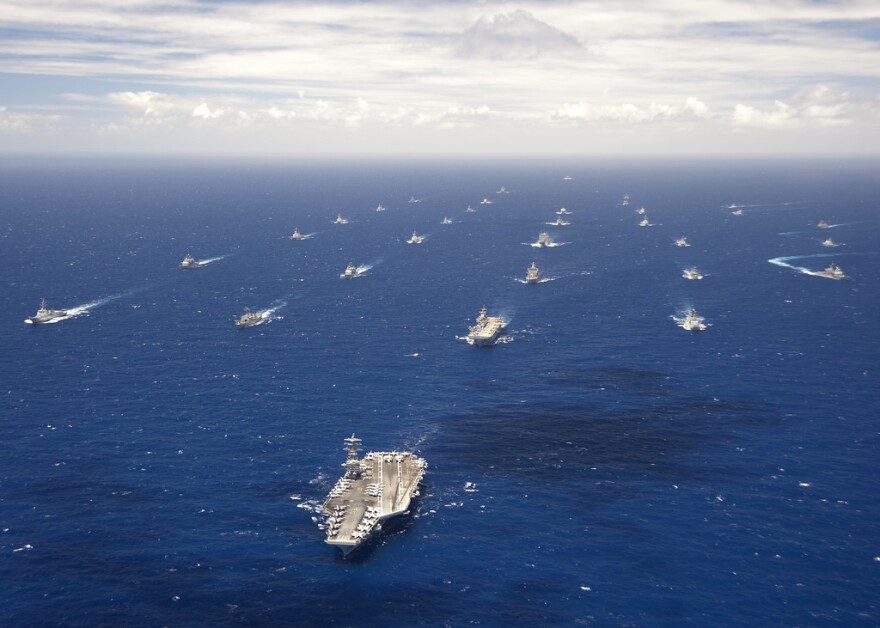
A shift is underway in the naval strategies of Asia-Pacific nations. Driven by concerns over China’s increasingly assertive posture in the region, countries from Japan to Australia are rapidly expanding their amphibious warfare capabilities. This buildup reflects a growing emphasis on securing complex coastlines and projecting power within their respective maritime territories. While China’s naval expansion isn’t new, recent demonstrations of force have amplified the urgency for neighboring nations to enhance their maritime defenses.
Japan’s Amphibious Force
Japan, in particular, is at the forefront of this trend. The Japan Ground Self-Defense Force (JGSDF) is set to receive a boost in amphibious assets, with 10 new landing craft slated for delivery by the end of Fiscal Year 2027. This fleet will comprise two 3,500-ton Logistics Support Vessels (LSV), four 2,400-ton Landing Craft Utility (LCU), and four smaller Maneuver Support Vessels. Japanese shipbuilder Naikai Zosen launched the first LSV on November 28th and the first LCU on October 29th, highlighting the accelerated pace of this program.
These vessels will be integrated into a joint Maritime Transport Group, scheduled for establishment in March. They will play a crucial role in supporting the Amphibious Rapid Deployment Brigade, Japan’s equivalent of a marine corps. The JGSDF, highlighting the strategic rationale behind this buildup, stated, “In light of the current severe security environment, the JGSDF will steadily build transport vessels to strengthen transport functions to islands.” This statement underscores Tokyo’s concerns about the vulnerability of its southwestern archipelago to potential Chinese incursions.
Australia’s Littoral Focus
The LCMs, designed by Birdon Group, can carry 90 tons of cargo, while the larger LCHs, based on Damen Shipyards’ LST 100 design, can displace a substantial 3,900 tons. On November 22nd, Canberra announced that Australia would construct all LCMs and LCHs in Western Australia, emphasizing the country’s commitment to bolstering its domestic defense industry.
Lt. Gen. Simon Stuart, Australia’s chief of Army, outlined the ambitious timeline for this project: “Our plan is to have the first medium in the water by the end of 2026, the first heavy by the end of 2028. That means we’ve got to work with industry and make sensible compromises to get the capability, which will be a step change above anything we’ve currently got.” The Australian government has explicitly linked this capability enhancement to a “strategy of denial,” which includes the deployment and sustainment of modernized land forces with long-range land and maritime strike capabilities across the region.
China’s Show of Force
Recent Chinese naval activities have further intensified regional anxieties. In December of 2024, China deployed its largest naval fleet in nearly three decades to the region, a move that Taiwan’s defense ministry described as a “great threat.” Defence ministry spokesperson Sun Li-fang stated that the scale of the deployment, stretching from the southern Japanese islands to the South China Sea, was unprecedented since the 1996 Taiwanese presidential elections.
While China has not officially confirmed any exercises, Taiwan’s military raised its alert status in response to the increased activity. Senior Ministry intelligence officer Hsieh Jih-sheng noted a significant increase in Chinese activity north of Taiwan, describing the number of Chinese navy and coast guard ships in the region as “very alarming.” He suggested that China’s deployment within the First Island Chain aims to prevent foreign forces from intervening in the region, effectively creating “two walls” in the Pacific to make the Taiwan Strait an “internal sea” of China.
Recent Chinese activities, including simulated attacks on foreign naval ships and blockade exercises, have reinforced the perception of a growing threat, prompting Asia-Pacific nations to accelerate their naval modernization efforts, particularly in amphibious warfare. This regional arms race, driven by China’s assertive posture, marks a significant turning point in the region’s strategic terrain.
